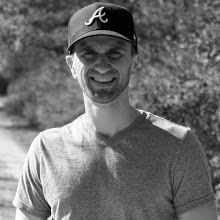Rich Dad, Poor Dad by Robert Kiyosaki
In Rich Dad, Poor Dad, Kiyosaki describes the lessons that his two dads taught him about money and its management. To clarify, he had one biological dad and the other was the father of his friend. One of them was highly educated with multiple advanced degrees, the other had an 8th grade education. One was very wealthy, the other regularly struggled with money. Counter-intuitively, the sides were changed on who was wealthy and who was poor. The dad with the 8th grade education, was a wealthy entrepreneur who owned businesses such as restaurants, a construction company and other business ventures. His educated dad spent the majority of life working with very little to show for it.
The first portion of the book is written as a story from the viewpoint of Kiyosaki as a 9 year old kid who learned financial lessons from his rich dad. He performed a number of jobs for him and learned many aspects of business by observing the management, accounting, sales, legal and other aspects. The style of this section was similar to the way The Wealthy Barber was structured in that it teaches financial lessons through narrative style.
A good point Kiyosaki makes is that a house is not an asset though it may be listed this way traditionally. The costs associated with a house such as utilities, property taxes, insurance, and maintenance pull away cash flow. He instead defines an asset as a resource that produces cash. A house actually could be in this category if fully paid for and used as a rental property. (To clarify Kiyosaki does not necessarily recommend buying real estate only with cash. He endorses obtaining financing and taking on debt) I personally think Dave Ramsey's thoughts on this subject of paying cash for investment real estate are more accurate and help to take into account the risk associated with debt.
Other assets could be mutual funds or stocks that generate cash flow as well as intellectual property such as books or music which produce royalties. A business that one owns but doesn't need to be actively involved in the work would also be considered an asset by his definition.
The point he makes is that many people put money into things which do not help to build their wealth and instead cause negative cash flow in some instances through expenses associated with them.
Kiyosaki also promotes a person being creative and figuring out ways to make money in scenarios which might not on the surface look like an opportunity. An example he gives of this is when he worked in a gas station as a kid for very low wages, they sold comic books which were thrown away if not sold by the time the comic salesman returned with the new comics. He collected all of these comics and started a comic book library which charged 10 cents for two hours worth of reading. This allowed kids in the neighborhood to read more comics for the same price that just one would cost. By looking around and finding ways to make money, he identified this opportunity and created a profitable situation.
This philosophy of the book is good in encouraging the building of assets which will continue to increase cash flow as well as the entrepreneurial spirit. One area I do not agree with is the risk level taken on through debt to enable the purchase of real estate. Overall, the book has some good lessons to be gleaned.
This article is also posted at Helium.com .

No comments:
Post a Comment